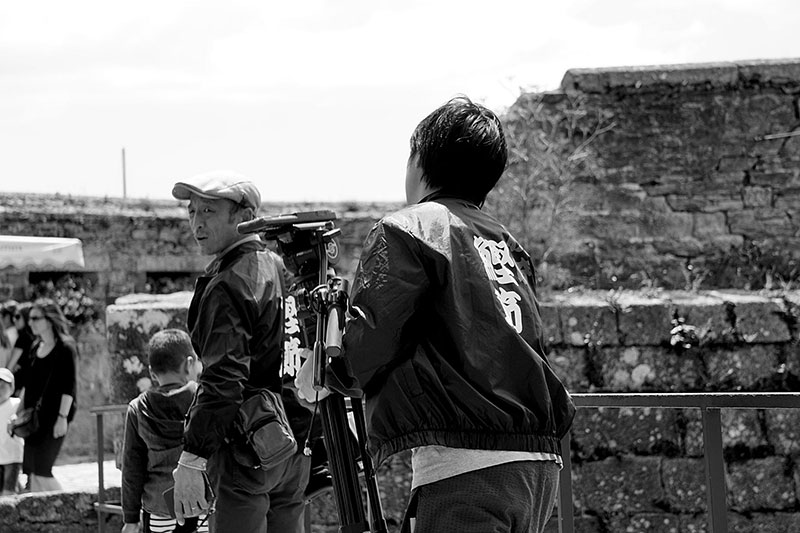Low Budget Filmmaking Tips

Low Budget Filmmaking Tips
Written by Shailik Bhaumik
Making an indie film can be rough, especially for beginners. Many times filmmakers go off halfcocked and jump into making a film without really thinking it all through. For what used to be a revolutionary idea, the concept of low-budget or no-budget filmmaking has now become very common in the indie filmmaking community. There are countless examples of low-budget films launching significant careers. So, as an up-and-coming filmmaker looking to make your mark, here a few tips that will help you on your filmmaking journey. Digital technology has made it possible for films to be shot and edited (even with dazzling special effects) for minuscule budgets. Entire feature-length films can be made for the cost of the catering budget in a traditionally funded and produced industry movie. The Blair Witch Project and Paranormal Activity demonstrated how the internet could be used to market a film using viral marketing techniques, techniques that were in their infancy in 1999. Orin Pelli’s Paranormal Activity also used a viral campaign, this time financed by Paramount, to turn a small ”no Budget” movie into a runaway box office success.

What are the opportunities in this new world of movies? Firstly, independent filmmakers can make films much more cost-effectively than the majors. Secondly, because the budgets are relatively modest, independent filmmakers can afford to make a movie that fails (unlike the majors). And finally, in this brave new movie world, everyone wants in – the studios want in, the websites want in, traditional TV wants in, the gamers and app builders want in, the big banks, the big brands and hedge funds want in. Everyone wants in. The studios and distributors, websites and television broadcasters all have the hardware to play movies. What they lack is the software – the movies. And if you can make compelling content, you will make money. Use Cameras
Available for Cheap:

High-end film cameras are expensive. The cost to use an 8K RED Weapon, for example, can grow astronomically out of hand very quickly. Chances are, you or someone you know has a perfectly capable DSLR or mirrorless camera that can shoot high-quality HD or even 4K without breaking the bank. Having a “good” camera is not a prerequisite for getting your film into film festivals or posting it online. If you understand of the technology (or have a good DP who does), you should be able to get footage that is dynamic enough to tell your story — which should be your primary focus.
Set Scenes in Free Locations:

When doing your pre-production, be aware of your scene settings. Reaching out to your network before deciding where you can shoot for cheap or for free shouldn’t hurt your creative process. Consider public locations or places you’ve been before. There’s no reason you need to pay thousands of dollars in location fees or halt production because a scene’s location is too ambitious — especially if you could quickly set the scene someplace much cheaper.
Natural Lighting:

In addition to keeping locations in mind, think about your locations’ amenities — specifically lighting. Use as much natural lighting as possible. This can help you cut costs, save time and reduce equipment needs. Look for locations outside or with lots of natural lighting, as that will help you save on large lighting setups. You can still shoot stylistically. Just remember that it’s cheaper to create darkness than it is to generate light.
Be Flexible on Set:

When on the set, try to keep an open mind about how to keep production costs down. A very detailed production script and schedule will help, but in the face of the many unforeseen setbacks you will undoubtedly face, flexible decision-making will get things done (and done well) without increasing costs.
Share Credit and Ownership:

When working on low- or no-budget passion projects, one of the significant downsides is that you probably are not going to be able to pay your cast or crew very much — if at all. This means you’re working on favors, goodwill, and mutual benefits. In this situation, put your ego aside, and share as much credit as possible. This can create much greater buy-in and a sense of ownership for everyone involved — even when there’s no money.
Focus on the Fun:

On a similar note, make your project fun to work on. Filmmaking, at its heart, is a fun endeavor. You’re creating art, and it’s a break from reality — even if requires hard work. If you can keep that in mind and make your collaborative process enjoyable, your crew will give you as much as they can and come back to help out again. Skimp on Everything But the Story: This should probably be the first, last, and all the pieces of advice in between, but always, always, always put the story before everything else. Your camera, acting, and even directing is secondary to the focus on the story. As any filmmaker will tell you, the story is what will shine through, and it is what people will remember. The story gets films shot for free on old camcorders with non-actors into film festivals and launches careers. So, before you shoot, make sure it’s a story you ’re ready to tell. Nothing glues you to the screen more than a good story. If the story is there, does one care about the budget of the film? Stories and screenplays have four main elements: Firstly, your story must have characters with a specific goal. A particular goal is one that can be measured, so at a point in time, we can see whether or not the character achieves or fails to achieve the goal. Secondly, your story has a setting. The setting can be usual or unusual. Thirdly, there are the Actions of the main characters and finally what they say, or Dialogue. The trick of a good storyteller is to weave these four elements together, so the seams do not show. When a writer achieves this, we say they have mastered the craft of storytelling. But not necessarily the art of storytelling.
Sound:

It isn’t the look of skin on skin that turns you on in a sex scene. It’s the sound of skin on skin. Professional filmmakers spend much of their time considering and creating the sounds that go with their pictures. It is a fact too that our brains are wired in such a way that when we need to strain to hear what the actors are saying, the picture goes dim. Good clean sound with interesting effects added in is the quickest way to make your images, even those shot on your mother’s humble video camera, look great.
The Music:

The fact of film revenue and distribution is that the main revenue streams are from the soundtracks for your film. This is because the musician's unions are much stronger than the actors, writers and film unions. After you film leaves the cinema (if it was lucky enough to get there in the first place) the main revenue streams a movie generates is for the mechanical copyright royalties for the soundtrack. Filmmakers are usually the last to understand how music royalties are decided, registered and administered. Explaining music copyright law is something that falls outside this short article. Briefly, filmmakers can get cheap or free scores by composing and performing it themselves. Remember that there are three music copyright streams: composers, lyricists and performers. Or, by getting an unsigned band to perform, or to acquire the movie rights to an existing band by contacting them through their agent, or estate if deceased.
Get Organized:

Nothing is more disheartening than showing up to help out on a mate’s shoot only to spend an hour looking for a screwdriver. Disorganization is totally unforgivable and easily preventable by advance planning. Make sure you know where everything is, and make sure everything and everybody shows up at the right place at the right time. If this is not within your organizational ability, partner with someone who is. Your Friends Cannot Act: It is always tempting to get a few friends together to make a movie and use them as actors as well. This usually leads to peril because your friends are not trained actors. They may have spent hours and hours with a video camera in front of the bathroom mirror, but they will not know how to act in front of a camera on a set. When your friends think they are acting well on set, you will probably be so shocked at their hammy performances that you will be unable to direct them without running the risk of destroying your relationship. Far better to advertise for actor/collaborators at a local theatre and acting schools, hold rigorous auditions until you find a stellar cast of talented unknowns than using your friends. If you have a suitable script and some money, you can approach a casting agent who will then pimp your script and your project out to established actors who might be willing to do it for nothing if they like the script, their role, and have been offered a suitable cut of the profits.
Build A Following:

In the good old days, filmmakers would submit their films to a series of film festivals and tour with their film building the hype for their film until they received sufficient distribution offers to finance their next project. By making and touring film after film, a filmmaker was able to build up a loyal fan base which would guarantee them and their producers a predictable revenue stream. The explosion of social media has changed the landscape and created two types of filmmakers: those who loathe and abhor social media, and those who embrace it. Contemporary filmmakers can use social media to create a following of people eager to sample and appreciate their latest work. Astute filmmakers employ two producers: one who deals with the traditional production workflow, and one who deals with social media. The first step for any filmmaker is to register the domain name for their production company and film title, as well as Facebook and Twitter profiles. Often these are sold on to eventual distributors, as was the case with Paranormal Activity. Filmmaker, Content Provider or Communicator? Whatever your goals are, remember that you need to decide what it is you are doing. Filmmakers make films and hope to cruise the festival route until they are discovered and become festival darlings. Content providers are professional filmmakers who deliver movies whether dramatic, corporate or documentary at a price per minute. Communicators are filmmakers and content providers who have something to say using the power of moving images with excellent sound, well-crafted stories and good soundtracks. Communicators will also consider a host of different mediums including short two and three-minute episodes for mobiles (mobisodes) or internet (webisodes). Gaming and phone apps also provide exciting storytelling possibilities with a host of different strategies for monetizing current content being debated around the world. There’s No Such Thing As Luck: Luck is earned through a combination of hard work and karma. If you maintain your integrity and your passion, success will surely visit you. Nothing is as compelling as a good movie. And by using the medium of cinema, you can influence and change lives. It is people like you that can make a difference and make this world a better place.
 Shailik Bhaumik is an award-winning filmmaker and entrepreneur. Known for his feature film “Dasein”, Shailik is the founder and Chairman of Human Lab Corporation, a Multinational Film Company whose mission it is to help Independent Filmmakers survive and thrive in this highly competitive industry. Shailik oversees worldwide operations including production, distribution, and marketing for HLC’s live-action films, as well as films released under the HLC banner.
Shailik Bhaumik is an award-winning filmmaker and entrepreneur. Known for his feature film “Dasein”, Shailik is the founder and Chairman of Human Lab Corporation, a Multinational Film Company whose mission it is to help Independent Filmmakers survive and thrive in this highly competitive industry. Shailik oversees worldwide operations including production, distribution, and marketing for HLC’s live-action films, as well as films released under the HLC banner.


